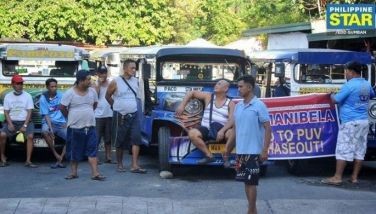Sight-Seeing In Sydney
CEBU, Philippines - Australia is so near yet so far a destination to most Filipinos because it is as expensive to go there, as it is to go to the U.S. mainland. Americanized Pinoys would rather cross the Pacific than go on a 7-hour trip Down Under. However, there are a lot of things to see and places to go in this island continent southeast of where we are.
Sydney, one of the popular cities of Australia, is much like Cebu in character and ambiance – definitely cosmopolitan. Its population of about 4.3 million is a mix of people from approximately 180 countries, speaking close to140 languages. Like Cebu, Sydney boasts of numerous beaches (Bondi, Manly and Taronga, among the best known) and an eclectic cuisine that is reflective of the melting pot that it has become. Most significant of all, many Filipino immigrants consider Sydney their home.
Main attraction is Darling Harbour where one can view two of Sydney’s landmarks: the World Heritage-listed Opera House and the coat hanger shaped Harbour Bridge. We did Darling Harbour almost daily while we were there, as there are many things to do in this frenetic hub.
Darling Harbour was our destination the day we arrived as my travel companion Linda Chua-Ong wanted to experience the wonders of Sydney Aquarium. This is a place where one should bring one’s children for a life changing up-close-&-personal encounters with marine creatures not seen in any other parts of the world. One example is the platypus (Ornithorhynchus anatinus), a mammal that lays eggs like a bird, with a beak and webbed feet like a duck, a body like a sea lion and a tail like a beaver. It can waddle fast on land and swim like a fish. Another delightful example is the Fairy or Little Penguin (Eudyptula minor) which is the smallest of all18 penguin species.
Elsa and George Arreza, our generous hosts, took us on a cruise from the Circular Quay to Manly. It is a charming seaside community with the rich and famous living nearby, as they moor their yachts at the Manly Yacht Club. British immigrant Henry Gilbert Smith established this resort town of over 300 acres in mid-1800s.
Chinatown was a must-do for some souvenir shopping, as nothing beats the low prices of Chinese stores. Also, the lure of good Chinese dishes never ceases to draw us. The purportedly beautiful Chinese Garden we failed to appreciate as they closed it for some ongoing public works.
We spent sometime with my daughter-in-law’s elder sister, Juliet Mutia, who is an Australian immigrant for some years now. She is a newly established real estate agent who loves her challenging work. She started us at the Museum of Sydney that sits on the site of the first Government House built in 1788. We were fascinated by the inter-active way they presented their history: you push a button to listen to the points of view of a black slave, a white colonizer, an aborigine, a convict, some colonial women across social strata, etc.
Then Juliet brought us to dinner at the Rocks, Sydney’s oldest settlement area, similar to our Parian. It is now a trendy dining haven for Sydneysiders who love foaming steins of beer and hearty meals. Bars and pubs abound, along with chic cafes and restaurants. We went to the tradition-soaked Australian Hotel’s restobar (just in the back of the imposing Shangri-La Hotel) where we squeezed into a corner cocktail table with high chairs. It was a packed early evening crowd of young executives. We enjoyed our kangaroo/emu/crocodile meat pizzas.
Rounding up our adventure, Juliet brought us to Woolloomoolo wharf district for another eating session – this time at the world-famous roadside joint named Harry’s. The steak pie was out of this world! No wonder celebrities, both international and local, queue at this Sydney landmark. From there, we walked over to BLUE Hotel, unique for its being located inside a warehouse. (Thanks for a fun time, Juliet!)
The Arrezas brought us to the country’s capital city of Canberra, some three hours’ drive away. With a guided tour through the Australian War Memorial, one realizes how Aussies take pride in the government’s war efforts, in the heroism and valor of the Australian soldier at whichever war front they found themselves, in Australia’s continuing fight for freedom and justice through the centuries. Being in the war memorial is a humbling, unforgettable experience. It is worth the visit.
Canberra City in the Capital Region has been carefully transformed to become the nation’s capital. The name is taken from the aboriginal word “Kamberra,” meaning a meeting place. European dwellers took over the place from the indigenous Ngunnawal people in the 1830s. It became the national capital in1908. Its clean, beautifully laid out road networks make Canberra such a pretty sight even when the famed tulips of the Floriade – Australia’s premiere spring festival at Commonwealth Park — had not peeped out of their bulbs on that early spring day.
On our way back to Sydney, we braved the cold afternoon to view the delightful miniatures in Cockington Green Gardens – the Taj Mahal, Stonehenge, Macchu Picchu, fabulous castles and manmade monuments throughout the world. But, oh, how I wished the roses were in bloom in the rose gallery. My mind envisioned the colors by the names of the rose bushes we passed by.
There were many sights still to see, to savor, but our time was up for Sydney. We left for New Zealand that weekend, bidding farewell to the wonderful Arreza family with hearts filled with gratitude.
- Latest
- Trending

























